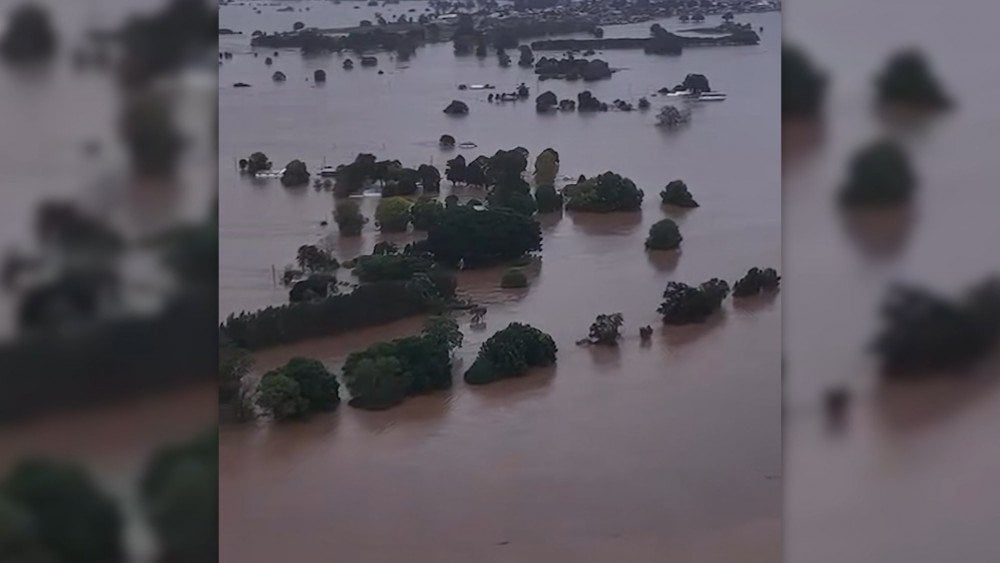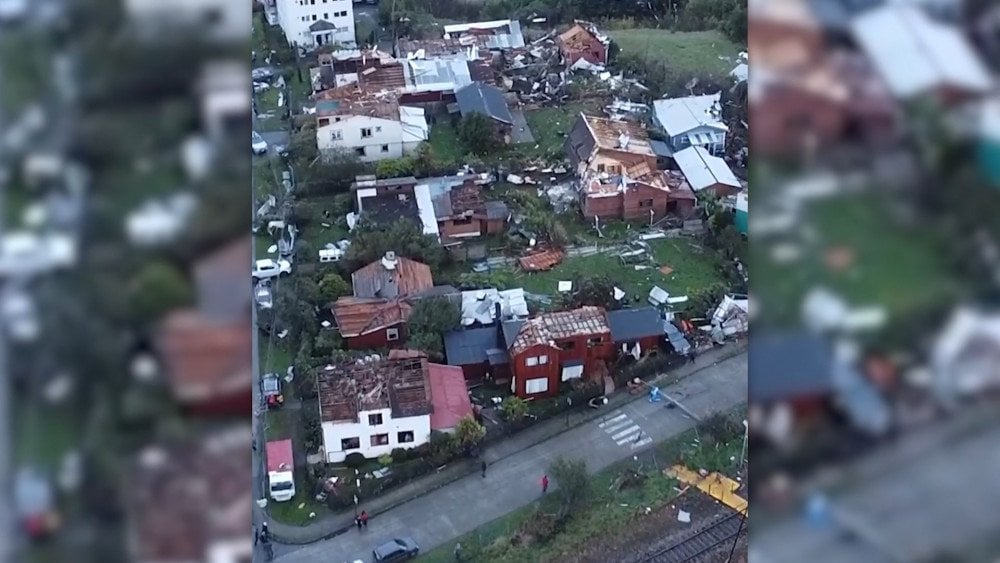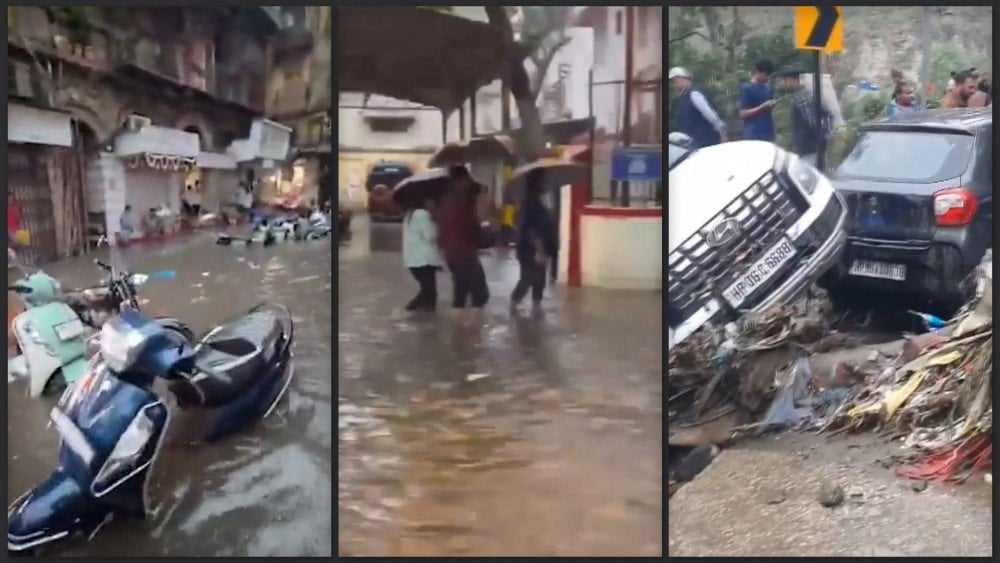Summary of climate disasters on the planet: May 21–27, 2025
While some regions are literally drowning in record-breaking rainfall, others are suffering from unprecedented heat and devastating storms. Even previously stable parts of the planet are turning into high-risk zones.
But there is one crucial point. Sometimes, human history converges into one defining moment—when the system wavers between collapse and a new level of evolution.
And now is exactly such a time. The slightest action—information, a decision, a single step—can change everything. Today, in the Summary of climate disasters for the past week, from May 21 to May 27, 2025, we will talk about this window of opportunity that has opened for humanity.
Australia
For several consecutive days since May 20, eastern Australia experienced extreme rainfall.

Widespread flooding hit the state of New South Wales after record-breaking rainfall
The record precipitation in New South Wales was caused by a slow-moving low-pressure system. In just three days, the amount of rain exceeded what was expected over six months.
In some areas, more than 400 mm (15.7 inches) of rain fell within 48 hours. The highest totals were recorded in Mural Creek—449 mm (17.7 inches), Moppy Lookout—436 mm (17.2 inches), and Mount Seaview—430 mm (16.9 inches).
In the Hunter and Mid North Coast regions, the Paterson, Gloucester, Manning, and Hastings rivers overflowed, leading to severe flooding.
According to the State Emergency Service, as of May 21, more than 48,800 people and 23,200 homes were cut off from the outside world.
Many residents climbed onto rooftops and vehicles, from where they were evacuated by helicopters.

During the severe flooding, rescuers evacuated a young woman from a rooftop by helicopter in New South Wales, Australia
Tragically, 5 people died (as of May 27). More than 100 schools were closed, and thousands of homes and businesses were left without electricity. Evacuation centers were opened for those forced to flee their homes. Taree became one of the hardest-hit towns. Within just two days, it received 412 mm (16.2 inches) of rain—five times the usual May average and nearly a third of the annual rainfall. On May 21, the Manning River rose above 6.3 meters (20.7 feet), surpassing the 1929 record flood level of 5.9 meters (19.4 feet).

The water level in the Manning River rose above the 1929 record, New South Wales, Australia
It is estimated that at least 10,000 homes and businesses along the Mid North Coast were destroyed or severely damaged. As of May 27, around 800 properties have already been declared uninhabitable and unsafe—and the number is still rising.
Even after the rains ended and the water levels began to recede, danger remained: the floodwaters were heavily contaminated, snakes and rats appeared, and in some places, exposed power lines were found.
Coastal areas were strewn with debris and the carcasses of dead animals. The habitat of Tasmanian devils—rare carnivorous marsupials native only to Australia and on the brink of extinction—was also under threat.
Chile
On May 25, residents of the Chilean city of Puerto Varas, Los Lagos Region, experienced a rare phenomenon for this area—an EF1 tornado.
The whirlwind swept through the city with wind speeds reaching up to 178 km/h (110.6 mph), damaging around 250 homes. The tornado tore roofs off a shopping center and a market, shattered windows, and brought down trees and power lines. As a result, more than 25,000 customers were left without electricity.
In the hardest-hit part of the city, the twister shifted several houses by 15 meters (49.2 feet), and some newly constructed buildings were completely destroyed.

The trail of destruction left by the tornado in Puerto Varas, Los Lagos Region, Chile
The storm injured 13 people, six were hospitalized. Fortunately, there were no fatalities.
The mayor of Puerto Varas called the event unprecedented for the region.
Russia
Late May brought a new wave of extreme weather to Russia.
On May 21, in Tompo District, Yakutia—one of the coldest regions on Earth—air temperatures rose to +24.5°C (76.1°F), while the average May maximum is only +11.6°C (52.9°F), setting a new daily record.

Abnormal heat across Russia
In some areas, temperatures approached +32°C (89.6°F)—on May 25 in the Vitim village, the maximum reached +31.8°C (89.2°F).
At the same time, in the south of European Russia, in the city of Sochi, daytime temperatures did not exceed +18.9°C (66°F).
Western Siberia also experienced a heatwave. On May 23 in Novosibirsk, the air warmed up to +30.3°C (86.5°F)—residents sought relief in fountains. On May 24 in Krasnoyarsk, the temperature reached +33.7°C (92.7°F). Two people were hospitalized with signs of heatstroke.
But by May 27, people were pulling out winter jackets again, as temperatures plummeted and snow began to fall.

Temperature swings in Russia: following extreme heat, snow fell at the end of May
Snow fell in the regions of Novosibirsk, Kemerovo, and Tomsk, as well as in Altai Krai and the Altai Republic.
In Karelia, on May 22, snow and subzero temperatures were recorded in Loukhsky District. Three days later, the region was hit by a thunderstorm with large hailstones up to 5 cm (2 inches) in diameter, and the temperature soared to +24°C (75.2°F).
A new temperature record of +28.1°C (82.6°F) was recorded in Petrozavodsk, and shortly afterward, the city was struck by a dust storm—something completely uncharacteristic for the region.
On May 24, a powerful thunderstorm with strong winds knocked out power in over 100 settlements in the Sebezhsky District of Pskov Region. More than 50 km (31 miles) of roads were blocked by fallen trees and branches.
On May 25, Moscow experienced true summer heat—+28.5°C (83.3°F), prompting the declaration of an orange-level weather hazard alert.
China
On May 22, provinces in central and southern China were hit by another wave of extreme weather: sudden heavy downpours accompanied by thunder, lightning, and strong winds.
The epicenter of the event was the city of Wuhan in Hubei Province. A record amount of rainfall was recorded there in a single day—130.5 mm (5.14 inches). For the first time ever, an “emergency heavy rain alert for the city” was issued.

Severe flooding in China following record rainfall
The rain was accompanied by wind speeds exceeding 27 m/s (60.4 mph), which knocked down trees and billboards.
Air traffic at Wuhan Tianhe International Airport was disrupted: 27 flights were delayed, and 44 were canceled.
In Qingyang Village, Bijie Prefecture, Guizhou Province, rain and hail that began on the evening of May 21 lasted throughout the night.
Water flooded homes, with levels in some buildings reaching up to 60 cm (23.6 inches).
In the morning, landslides cascaded down the steep mountain slopes, burying 8 houses.
Tragically, 4 people were killed and another 17 were reported missing as of May 23.
It is worth noting that prior to May, Guizhou Province had conducted an assessment of landslide-prone areas, but the slope in Qingyang Village was not listed among them. However, during the night of May 21 to 22, extreme rainfall—over 200 mm (7.87 inches)—triggered a sudden ground collapse.

A massive landslide descended from the mountains in Qingyang Village, Bijie Prefecture, Guizhou Province, China
Another tragedy occurred in Guangxi Province, Longsheng County, Guilin Prefecture. On the morning of May 23, residents of Sanshe Village heard a loud noise, and then water and rocks suddenly poured down from the mountains.
As of May 25, the disaster had claimed the lives of at least 5 people, with 3 more reported missing.
India
Starting May 21, powerful thunderstorms with heavy rain, lightning, and hail swept through the Delhi capital region and neighboring states, causing chaos in the transportation system and widespread power outages. Winds exceeding 80 km/h (49.7 mph) kicked up a dust storm that engulfed the city.

Strong winds stir up a dust storm over the Delhi capital region, India
In just one night, from May 24 to 25, New Delhi received 81.4 mm (3.2 inches) of rainfall. Following this downpour, the total rainfall for May reached a record level not seen since 1901— six times higher than the monthly average: total rainfall in May—186.4 mm (7.34 inches); average monthly norm—30.7 mm (1.21 inches).
As a result, streets were flooded, power lines were damaged, and over 450 flights were delayed or rerouted.
The state of Uttar Pradesh was hit especially hard. A powerful storm uprooted thousands of trees, destroyed buildings, and claimed the lives of at least 56 people.

Aftermath of the severe storm in India
In the city of Budaun, strong winds caused part of a mint oil factory to collapse, triggering a major fire. Due to the high flammability of the raw materials, the fire continued burning throughout the night.
In the city of Mainpuri, around 400 power line poles were knocked down, leaving entire areas without electricity.
The severe weather also affected aviation: a flight from Delhi to Srinagar encountered intense turbulence 45 minutes after takeoff. The plane was struck by lightning, and the nose was damaged by hail. Fortunately, the aircraft, carrying 227 passengers, landed safely.

An aircraft flying from Delhi to Srinagar was struck by lightning and damaged by hail, and encountered severe turbulence, India
In Noida, metro service was temporarily suspended due to hail and fallen trees.
On the western coast of India, the monsoon arrived 16 days earlier than usual—the earliest onset of the rainy season in at least 75 years. Overnight on May 26 in Mumbai, more than five times the monthly rainfall average fell—252 mm (9.92 inches), compared to the May average of 44.5 mm (1.75 inches).
Pakistan
On May 24, following a wave of extreme heat with temperatures exceeding 45°C (113°F), a powerful storm struck central and northern regions of Pakistan. The storm brought thunderstorms, hail, and torrential rain, affecting the provinces of Punjab, Khyber Pakhtunkhwa, and the nation's capital—Islamabad.

Raging floodwaters on the streets of Pakistan after a powerful storm
The violent weather paralyzed road traffic, destroyed infrastructure, and caused widespread power outages. Winds were so strong they tore solar panels from rooftops, uprooted trees, and filled the air with dust and sand.
In Islamabad, floodwaters rushed into homes, creating serious hardships for residents. At Quaid-i-Azam University, a roof collapsed. The province of Punjab—the most densely populated in the country—was especially hard hit.
In Lahore, the capital of Punjab and Pakistan’s second-largest city, one of the metro lines was halted, and passengers were evacuated.
Due to low visibility, highways in several areas were closed.
As a result of collapsing walls and roofs, falling solar panels, and lightning strikes in Punjab Province, at least 20 people lost their lives, and more than 150 were injured.

Aftermath of the severe storm in Pakistan
The storm nearly caused a disaster involving flight FL 842 of a private airline en route from Karachi to Lahore.
During landing in Lahore, just as the aircraft touched down, it was struck by a sudden gust of wind and hail. The pilot aborted the landing and lifted the plane back into the air. For 10 minutes, the plane remained in an area of intense turbulence, being violently shaken from side to side. Panic broke out on board—passengers screamed in fear. According to one of them, it was the worst flight of his life. The aircraft was eventually rerouted back to Karachi, where it landed safely. The passengers refused to board another flight.
Seismic Activity
On the morning of May 22 at 6:20 LT, a powerful earthquake with a magnitude of 6.1 struck off the northern coast of the Greek island of Crete at a depth of approximately 64 km (39.8 miles).
In the city of Heraklion, parts of building facades collapsed, and the seismic event triggered rockfalls and landslides along roads.
The tremors were felt across Crete, neighboring islands, and several countries in the Eastern Mediterranean, including Israel, Egypt, Turkey, Lebanon, and Jordan.
Several aftershocks followed the main quake, with magnitudes reaching up to 3.5. This was already the second earthquake in May with a magnitude over 6 near the island of Crete.
Early in the morning on May 23, a powerful magnitude 6.3 earthquake struck Indonesia’s Bengkulu Province on the island of Sumatra.
According to BMKG, the quake occurred at 2:52 LT, 43 km (26.7 miles) southwest of the city of Bengkulu. The hypocenter was located at a depth of 10 km (6.2 miles).
The city of Bengkulu and central areas of the province were hit hardest. Local residents reported waking up to strong shaking and running out into the streets in panic. Many spent the rest of the night outdoors, fearing aftershocks.

Collapsed buildings after the M6.3 earthquake in Bengkulu Province, Sumatra Island, Indonesia
According to official reports, more than 200 structures were damaged—both residential and public buildings. Eight homes completely collapsed.
Some residents were injured, but fortunately, no fatalities were reported.
Two more powerful seismic events struck the planet over the past week.
On May 23 at 16:33 UTC, a magnitude 6.1 earthquake occurred near Macquarie Island, south of Australia. The hypocenter was at a depth of 10 km (6.2 miles).
On May 25 at 23:49 LT, a magnitude 6.0 quake was recorded in the Tonga archipelago region in the Pacific Ocean, southwest of the town of Ohonua. The hypocenter was located at a depth of 48 km (29.8 miles).
Earthquakes are becoming more frequent—their increase now follows an exponential pattern. A forecast made years ago by the scientific team of ALLATRA is coming true with alarming accuracy.
Seismic events with magnitudes above 6 are now being recorded almost every day. Anyone can verify this for themselves by installing an earthquake tracking app on their phone. Seismological services are too slow in aggregating data, and the magnitudes of some events are understated—while others mysteriously vanish from databases altogether. That’s why your personal observations may be more reliable.
We can no longer hope things will resolve on their own. Urgent and extraordinary measures must be taken. And the international scientific team ALLATRA is proposing a scientifically grounded solution to the climate crisis: concrete engineering strategies capable of averting the looming catastrophe and ensuring the planet's safety for current and future generations. In his address, Dr. Egon Cholakian—a scientist from the ALLATRA international team—shares not just solutions, but breakthrough technologies that could transform our understanding of physics and open a new era in science. This is not just a theory—this is a real path to saving humanity!
You can watch the video version of this article here:
Leave a comment